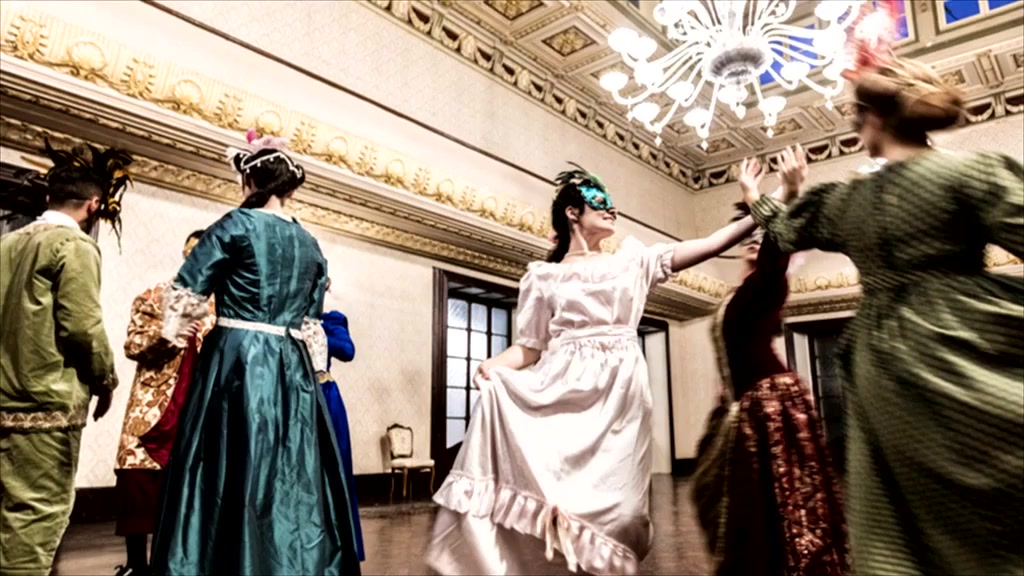FIVE DAYS IN DECEMBER. 3 Authors 5 Books #Fiction and #Nonfiction of AoL Publishing from Malta! Are you ready to set sail on the Ancient Worlds Seas for the AoL with our amazing 75% + discounts?!

FIVE DAYS IN DECEMBER. 3 Authors 5 Books #Fiction and #Nonfiction of AoL Publishing from Malta! Are you ready to set sail on the Ancient Worlds Seas for the AoL with our amazing 75% + discounts?!
Even though an opera is a theatrical form expressed within the theatre environment for centuries, the opera film is a rather new form of art. Until recently, the opera's composer would be passing his instructions to the cast. There was only one Carmen, or one Magic Flute. However, not that long ago, the stage director became increasingly important. With the introduction of an Opera Film, the opera world has become an increasingly complex art form.
To enjoy it, the audience must recognize opera as a multidimensional art performed by singers not actors. The director must remain true to the work, to the composer and the musical language used. This is a three-dimensional art not attempted by many.
Directing an opera film, the director must show the full appreciation for the talents, principal singers, dancers, chorus and stay true to the visuals. We find that not only the stories, but the music and the very form itself has to be reinvented.

Opera films are the most difficult genre to engage in. A first ever opera in Maltese, Blat: The Island Fortress, was a brave endeavour. New stages in artistic development lead to new dynamics, and critics should understand the new challenges that the operatic theatre has created. An authentic opera with its own music, script and staging, in which each stage of the process has been carefully performed always brings unique challenges. New stage interpretations of classical operas were perceived by many as a breath of fresh air.

In this new situation, the director takes precedence, not only in the stage presentation of the operatic score, but also in the development of opera as an art form and, finally, in the communication with the audience.

It perhaps takes a special kind of courage to perform at Malta’s National Theatre, Manuel Theatre, built in 1731 by the Knights of St. John, in one of the oldest working theatres in Europe, as a young 18-25 year old artist staging a Maltese production. There they are, handling a space and expectation of audience that has seen arguably the greatest shows of Malta, but still working with amazing 'but we think we can make an extraordinary piece of music theatre...’

Introducing tales from 21st Century women, set to lyrics, music and dance highlighted contemporary social issues. Without using the obvious, subtly but significantly tweaking the story interpretation, reunited with the nuclear family in the production. Led by their teacher’s motto: “There is nothing more beautiful than giving your soul to the audience:” the performers were able to zoom in and out and tell a bigger story of individuals and about community
We were invited to join a 70 minute journey through various life struggles as the young cast of opera singers and dancers experimented with contemporary youth opera and dance, inviting the audience to join the conversation.
Malta Temple Culture 3,500 BC - 2,400 BC https://artof4elements.com/entry/293/mystery-of-lost-european-civilisation #Art, #Education, #Symbols and Signs
On the autumn morning just after the full moon of the Equinox month, in the year 1460 BC, an un-named volcano in Southern Italy that had been silent for decades, suddenly burst into life and exploded. By the end of the following day, the islands of Malta and Crete were buried under ash, rock and mud, carried by an 80 meters high tsunami wave, where they remained lost and forgotten for the next 4,500 years.

At the time of eruption, the temples were long abandoned by its builders, following a harsh climate change that increased storms and rains, removing layers after layers of carefully cultivated and for centuries fertilised land. The evidence of this catastrophic event was found on the skeleton of the last generation of Neolithic Temple Builders, around 2400 BC. In an attempt to keep the land from disappearing, many ancestors’ bones show the evidence of strained wrists.
A rich and bustling community of 2,000 people, at its peak, had built 66 temples during the period of 1,000 years. Now, a new exciting archaeological excavation at Tas-Silġ in Marsaxlokk, sheds further light about Neolithic Temple Builders of Malta.
To tackle the emergency facing people and planet- Education, Mindfulness, Power of Mind, Healthy Living
Last Sunday, Malta held its National Animal Rights' Day. In Mosta's most amazing garden with an amphitheater directly facing a sun-set + some most beautiful people from Malta, Macedonia, Japan, Greece, Libya, Italy, Croatia, Serbia, England, and many more countries gathered to celebrate this worldwide event.

ALM's mission is to raise awareness and take action against all forms of animal abuse.